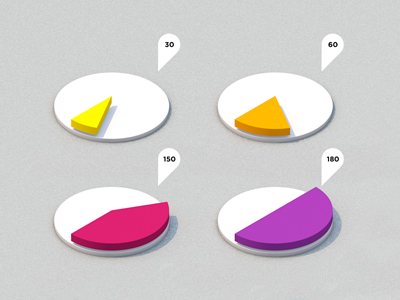
Learning how to work with the outsourcing companies using different financial terms doesn’t mean you need to get your own experience with the occasional ripped off deadlines, budget overruns and bad mood.
In the perfect world, you just make a single-payment to a trusted team, immediately approve the product, complying with all the requirements, wishes and desires, launch it on the market and enjoy the profit. However, IRL everything is far more complex.
Each model of financial cooperation has its pros and cons for both the customer and contractor. And determination of the appropriate option should be based on the business’s ins and outs, the scope of work and type of project. In the previous article from the Pricing Models cycle, we compared the Fixed Price and Dedicated Team approaches with a promise to consider the Time & Material scheme separately. Voila!
Time & Material Essentials
The concept of the Time & Material (T&M) model means paying for the result, based on labor costs. The customer pays not for the workload at once, but for the man-hours, spent by the contractor's team to develop and implement the software. T&M is best when it’s impossible to determine the full scope of work or terms of their performance. It would seem like
Contractor owns the magic “money” button – he can puff up the project time and budget to infinity and beyond!
But no. The hotshot customer splits the co-operation process into 2-4 week stages. Before the each stage’s start, the customer and the team together define the goals and objectives, and after its end, the contractor provides reports on the results and man-hour working sheets.

These stages might be completed in different ways: from the backend modifications to a full working prototype / software build, and in exceptional cases to a system’s ready to go version. By the way, the time and the principle stages of T&M are similar to the Scrum iterations, so it often goes in conjunction with the agile development methodologies.
The customer pays for the project based on the hourly rate for each member of the team and level of effort. Therefore, the unwise contractor will fail in attempts of unnecessary project’s cost increase. Payment terms are discussed individually. Depending on the customer, payments will be made on a phased basis, monthly, every six months, and so on.
For planning and controlling the tasks as well as monitoring the time and errors, our company uses the JIRA system. Customer's representatives also get access to it in order to monitor the progress of the project and control costs. Otherwise, the outsourcing team can get access to the customer’s system, if he is accustomed to a different environment (Redmine, Basecamp).
Let's see when the T&M use is highly efficient.
By Client
Pros:

Сons:
By Contractor
Pros:

Cons:

What Projects Are Good With T&M?
Of course, the specifics of each project can both simplify life for all parties, and spoil the mood. Therefore, we identify the types of projects for which we recommend the Time & Material model:
1. The project is at the stage of testing, bugfixing, maintenance or updating. T&M is a very convenient option for performing the work in individual blocks. Each step can be described in detailed specs, especially when the primary project documentation is also available and understandable.
2. Mid-length greenfield project. Here we include the products that meet the period up to six months, bring up the 5 people and more teams and require at least an average level of technical documentation. The post payment model allows the contractor to adapt to the customer's wishes and demands of the market, so the clear specs, although necessary, might not be available at first. In this case, the documentation will be written in the course of work, or will be the first task in the project.
3. Large greenfield project. When the project size requires efforts of the cross-functional team of 25 people and more and the development time breaks out from 1 year, the customer also might use the Time & Material. Taking into account such sizes and timing, it is extremely challenging to draw up the preliminary specifications. They might contain thousands of pages and will be adjusted in the course of development.
Think about your project from different angles and consult your contractor about the most advantageous outsourcing scheme for you. We remind you that we have a convenient table of all three methods of financial interaction. Study it and make your project profitable!